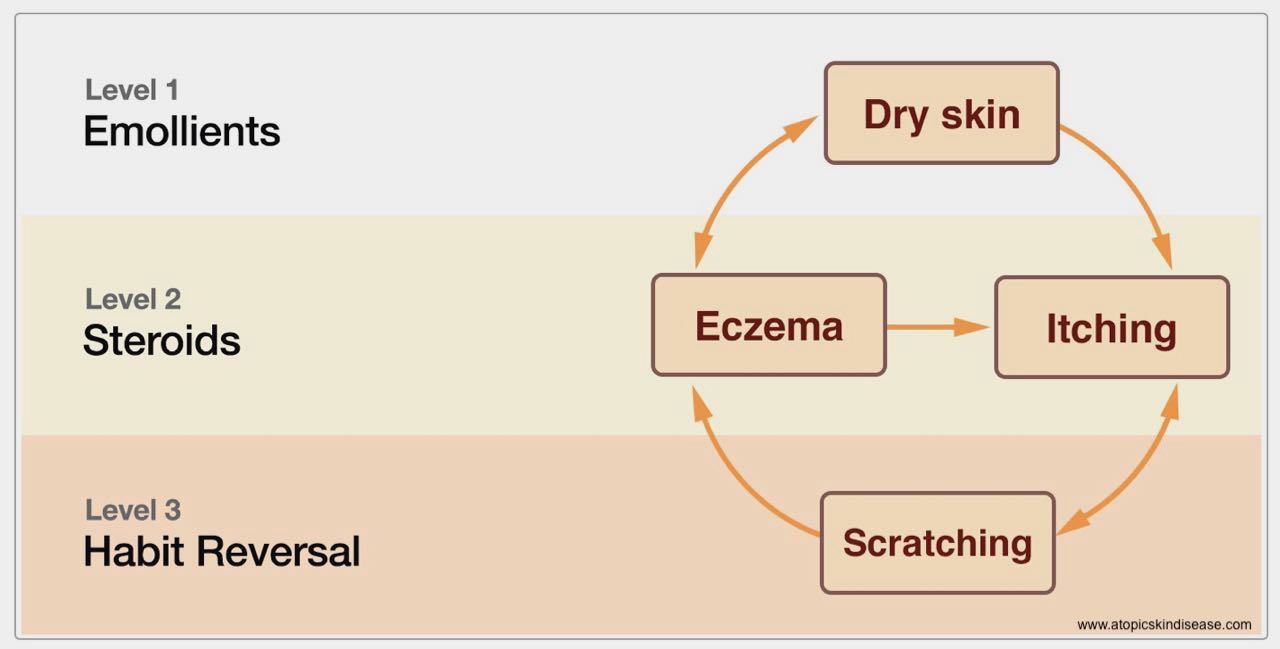Habit reversal, atopic eczema and optimising topical treatment

The Combined Approach to chronic, otherwise hard-to-treat atopic eczema - habit reversal combined with optimised conventional topical treatment - is a staged programme of treatment with no short cuts.

For the clinic-based programme there are usually four appointments. The self-help programme follows a similar format.
The importance of initial assessment enabling a successful outcome cannot be underestimated.
Time is needed to clarify what treatment has been used previously, what is being used currently, why it is being used and how it is being used. Failure to do this can cause difficulties later when the optimal use of conventional topical treatment is reviewed at the second appointment.
As habitual scratching has complicated the atopic eczema, topical treatment has become less and less effective. The resultant chronic eczema is essentially a neurodermatitis: lichenification secondary to mechanical trauma to the skin.
Characteristically patients with this condition become understandably disillusioned with advice about conventional treatments, especially topical steroids, as their experience to date following advice is disappointing.
The protocol we recommend above should be kept to.
The introduction of optimal conventional treatment - effective use of emollients + correct use of potent topical steroid - should wait until after awareness training. At the second appointment part two of the patient handbook enables the practitioner to cover with the patient what to use and how to use all that is required for The Combined Approach, all starting at the same time:

If what to use and how to use at Level 1 and Level 2 it is explained and started at the same time habit reversal is started, the next two weeks can be a remarkable learning experience for the patient. At a third appointment the opportunity is taken to review again the principles and practice of optimal topical treatment, and at the fourth appointment the follow-up plan, without further habit reversal but with intermittent but vigorous topical treatment of flare-ups, will be all that is needed.
A previously disillusioned patient is now transformed into someone actively and optimistically following an effective treatment programme.
